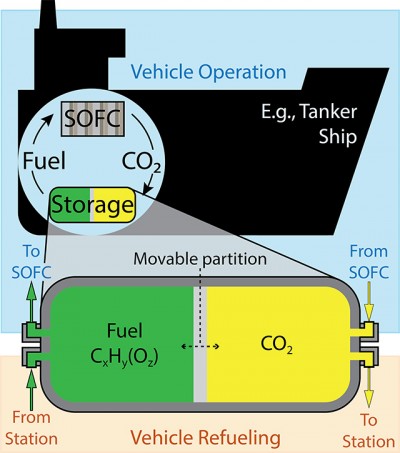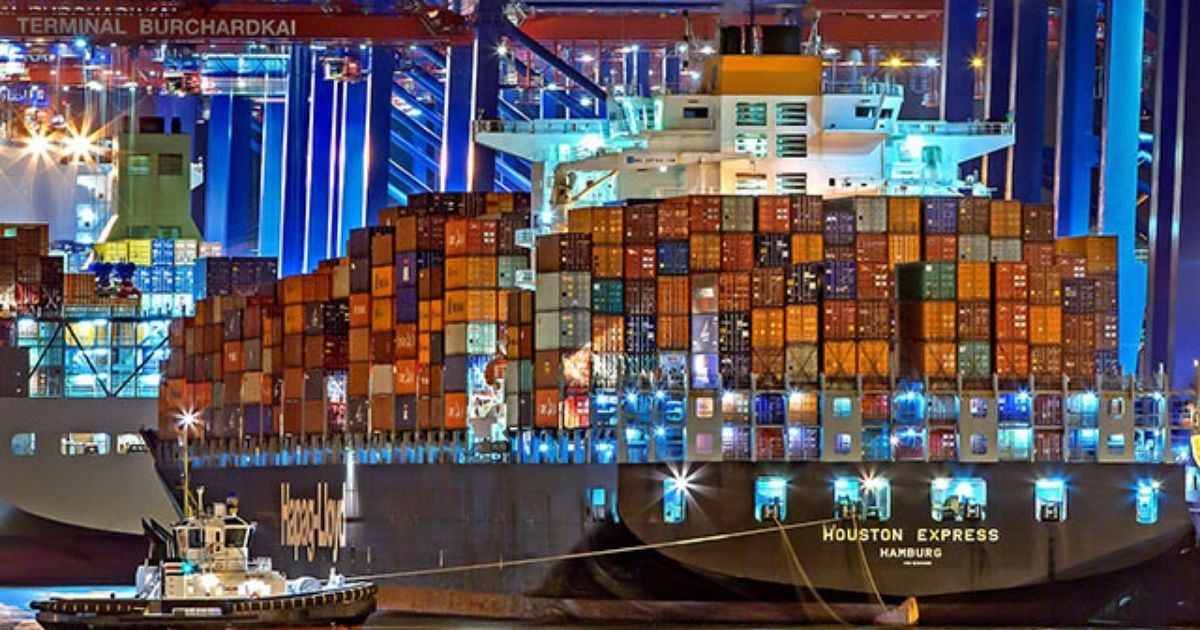Method can be implemented based on existing technologies
 When people talk about how to eliminate vehicles' carbon dioxide (CO2) emission, often the conversation often focuses on electrifying cars, trucks and buses. Yet cargo and tanker ships, which are responsible for 3% of all CO2 emissions, are rarely a part of the discussion.
When people talk about how to eliminate vehicles' carbon dioxide (CO2) emission, often the conversation often focuses on electrifying cars, trucks and buses. Yet cargo and tanker ships, which are responsible for 3% of all CO2 emissions, are rarely a part of the discussion.
Now a Northwestern University research team offers a practical way to make ships CO2 neutral -- or even CO2 negative -- with CO2-capturing solid oxide fuel cells. After "burning" traditional carbon-based fuels, the fuel cell generates concentrated CO2 that can be stored on-board the ship. From there, the CO2 can either be sequestered or recycled into a renewable hydrocarbon fuel.
The team presents its analysis in "Viability of vehicles utilizing on-board CO2 capture," published today (Aug. 18) in the journal ACS Energy Letters. In the paper, the team looks at various factors, including fuel storage volumes and mass requirements for a wide range of vehicle classes -- from light-duty passenger vehicles to tanker ships -- and compares onboard CO2 capture to battery electric and hydrogen fuel cell options.
"It might be harder for people to see onboard CO2 capture as climate friendly because it uses conventional, carbon-based fuels," said Northwestern's Scott A. Barnett, senior author of the study. "People tend to assume hydrogen fuel cells and electric vehicles are more climate friendly. In reality, they often are not. Electricity might come from burning coal, and hydrogen is often produced by natural gas, which generates a lot of CO2 in the process."
An expert on solid oxide fuel cells, Barnett is a professor of materials science and engineering at Northwestern's McCormick School of Engineering. He coauthored the paper with Travis Schmauss, a Ph.D. candidate in his research group.
Why batteries aren't a viable solution
Responsible for producing about a gigaton of CO2 each year, ships can consume up to 250 tons of fuel per day. While it might seem tempting to replace this massive amount of fuel with batteries, that's simply not an option.
"Some tanker ships require enough fuel to circumnavigate the globe as a part of their regular multivoyage operation," Barnett said. "We calculated that the battery pack for a long-range tanker would take up more room than the storage capacity of the ship. A hydrogen fuel tank also would be too large. When it comes to long-range vehicles, carbon-based fuel combined with on-board CO2 capture is arguably the best way to make these vehicles CO2 neutral."
The proposed method also has potential advantages for shorter-range vehicles. Battery electric and hydrogen fuel cells, however, are already being implemented for those vehicle types, so the researchers instead suggest implementing a CO2-neutral range extender.
Storage solution
To store the CO2 on board, Barnett's team has proposed a patent-pending dual-chamber storage tank. One chamber stores a carbon-based fuel. After the fuel cycles through the fuel cell to create energy, the CO2 byproduct is pressurized and introduced into the second chamber. The partition between the chambers can move -- shrinking the fuel chamber as the fuel is used, making space for CO2 in the other chamber.
"The solid oxide fuel cell is critical because it burns the fuel with pure oxygen, yielding a concentrated CO2 product that is storable," Schmauss said. "If we just burned the fuel with air, it would be heavily diluted with nitrogen, yielding too much gas to store. When the concentrated CO2 is compressed, it can be stored in a volume not much larger than that needed for the fuel, which saves space."
"This technology really doesn't have any major hurdles to making it work," Barnett added. "You just have to replace the fuel tank with the double-chamber tank and add CO2 compressors. And, of course, the infrastructure eventually has to be developed to off-load the CO2 and either sequester or use it."
Moving toward net-zero
With this scenario, the researchers say it is possible to make long-range vehicles CO2 negative. This is possible with bio-fuels, such as ethanol, because the plants used to produce the fuel have consumed CO2 from the atmosphere. Then, after the vehicle has used the fuel, the captured CO2 is removed from the ship and sequestered underground or used in producing a renewable fuel. If a vehicle uses a fossil fuel instead of a bio-fuel, then the resulting overall cycle is closer to net-zero.
By Amanda Morris, Northwestern University
Journal Reference:
Travis A. Schmauss, Scott A. Barnett. Viability of Vehicles Utilizing On-Board CO2 Capture. ACS Energy Letters, 2021; 3180 DOI: 10.1021/acsenergylett.1c01426





